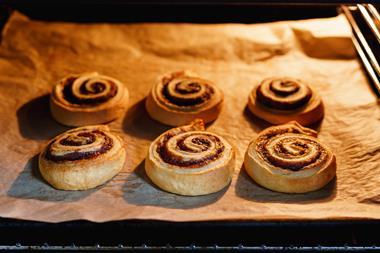This week’s biggest faux-pas on The Great British Bake Off (GBBO) was served up by none other than Mary Berry, when she accidentally gave away who was going to leave the Bake Off before the show had even aired.
The episode itself commenced with a quick bread challenge and ended with show-stopping bread sculptures. The latter included: Tamal’s chunky fig, walnut & goat’s cheese loaf, described as “gorgeous”; a sweetened orange scented loaf by Paul, which was deemed “excellent”; while Ian produced a beauty – a light-textured wild garlic loaf. “Pass the butter,” I heard myself say! Meanwhile, Paul’s bread lion was exceptional and had Paul Hollywood in raptures.
However, in between lay the technical challenge and it wasn’t an easy one to get right. The contestants had to bake four identical baguettes. The staple loaf of France is quite hard to bake in a domestic setting; in fact very few professional bakers outside France manage to produce this seemingly simple loaf to a standard that would satisfy French taste buds.
The most important part of the baguette is a good crust and not a tight crumb, but one with large holes in it. You might say the jam falls through the holes, but the whole point of it is that you pull away the crumb and spread the confiture on the crust, just as Monsieur Gaultier did, the host father on my first school exchange.
During my training we made as authentic a baguette as you can get when situated 10 miles east of the French border. We even had a brand new French-made Bongard oven. My then boss, Christian, was passionate about baking a superb baguette.
The GBBO bakers had no chance to ever get it right! A proper baguette has the slowest of proofing times imaginable. To get the large holes in the crumb, the dough must have a low yeast content (about 10g per kilo of flour) and a really, really slow fermentation time. For this, the water is best to be ice-cold and/or the dough made the day before and refrigerated.
Even the making of the dough is an art form. We used to mix flour and water very slowly for about three minutes, and then add the yeast for another two minutes. The salt was only added after that, as this would prevent it from inhibiting the yeast. At this point we cranked the speed up for about two more minutes, just so the dough came off the side and looked smooth and silky.
Once the baguettes were shaped, they got their second proof at room temperature, not in a proofing cabinet. Just like on GBBO the baguettes were then rested on couches for their final proof and covered with a thick sheet of plastic to stop them crusting up.
The bake was equally crucial. The GBBO bakers who put steam in their oven got it right. In a domestic oven without a fancy steam setting you can improvise with a very televisual trick indeed – it’s a pity they missed out on that. Place a baking pan filled with pebbles in the oven while you pre-heat it to 240°C. As you put the breads in the oven, immediately pour about 150ml of water over the hot pebbles. The increased surface given by the stones will help create more steam.
Et voilà, after 20 minutes all there is left to do is uncork the vin rouge and get the pâté out.
This week’s goner was Dorret – au revoir! The star baker’s sceptre went to Ian – watch out for him, he could be a champion!





























No comments yet